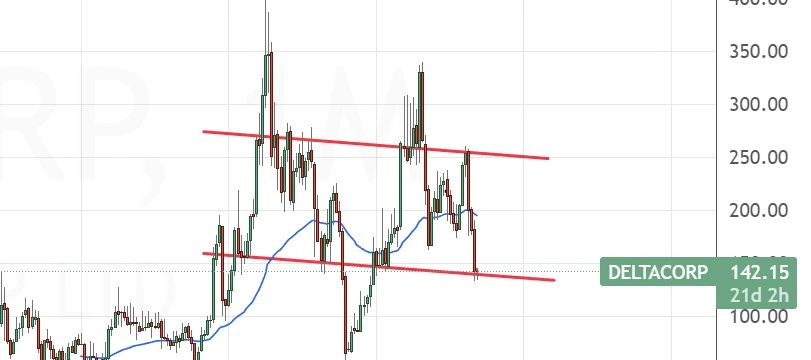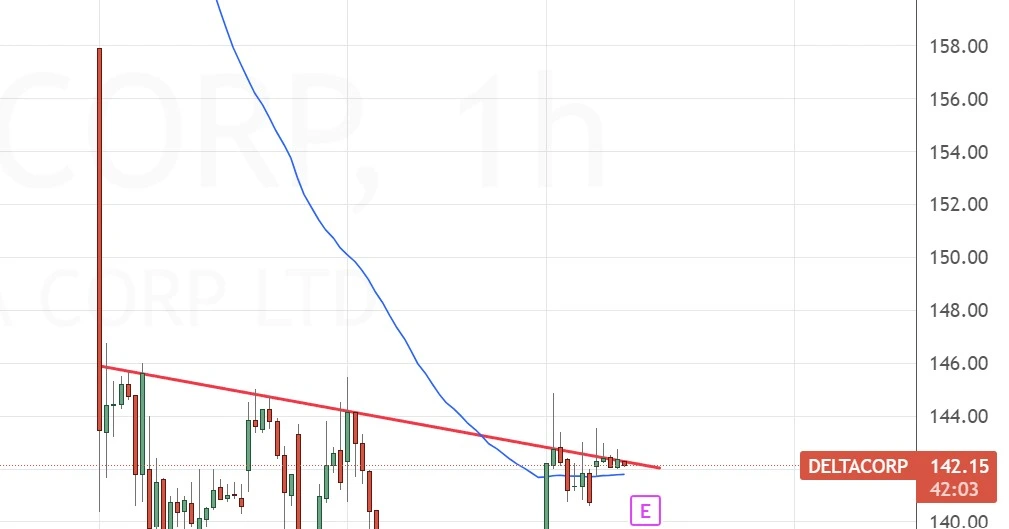
One of the most popular social media platforms in India right now is Telegram, especially for trading. There are numerous Telegram channels that provide traders with free tips, counsel, opinions, and charts. Telegram is one of the best places to find stock market tips of all kinds, including intraday tips, options tips, and delivery calls.
There are a lot of trading Telegram channels, but not all of them are registered with the SEBI. In this article, we’ve listed the top SEBI-registered Telegram channels you can join to get the most recent stock advice and recommendations.
List of SEBI Registered Telegram Channels in India
| Channel Name | Subscribers | Link |
| StockPro_Online | 2,07,598 | Join Now |
| chaseAlpha | 40,232 | Join Now |
| equity99 | 1,50,553 | Join Now |
| Neha0103 | 28,020 | Join Now |
| SharesNservices | 8,096 | Join Now |
| StockMarketTodayUpdates | 1,31,261 | Join Now |
| STOCKGAINERSS | 72,367 | Join Now |
| eqwires | 12,444 | Join Now |
| PATELWEALTH | 12,44,526 | Join Now |
| VGSTOCKRESEARCH | 2,325 | Join Now |
| stockboxtrading | 34,105 | Join Now |
| abhayvarn | 37,102 | Join Now |
| deltatrading1 | 36,990 | Join Now |
| Stockwizardd | 14,184 | Join Now |
| Intradat | 11,609 | Join Now |
| GREEN_TRADERS_SEBI | 12,389 | Join Now |
| NIFTY_PREDICTION_SEBI_BANKNIFTY | 7,106 | Join Now |
1. StockPro Online
StockPro is a well-liked trading Telegram channel run by Dr. Seema Jain, a research analyst registered with SEBI. You can find timely and accurate information about stocks, market trends, and other positional trading options on this channel.
You can also benefit from the premium courses that StockPro offers to gain in-depth insights on trading and investing.
Characteristics
- 98% accuracy in their trading calls
- Offer finest equity calls along with positional stock updates
- Exclusive morning sessions for discussing topics
- Specialization in bank nifty and options trade
2. Chase Alpha
Chase Alpha is another Telegram channel that has been registered with SEBI. Get free calls and stock market updates here. It is among the best channels to sign up for if you want to trade options on the nifty and bank nifty.
Characteristics
- Free channel
- Exclusive courses for the stock market
- Helpful for options and event trading
3. Equity99
One of the best trading platforms is Equity99 because it offers a fair and impartial analysis of the stock market. Their channel’s main focus is on providing both short- and long-term investment advice for stocks and mutual funds. Investors and subscribers can obtain regular, in-depth reports at Equity99.
Characteristics
- Authentic calls
- 90% accuracy
- Tips with proper stop-loss strategies
Additionally, if you want to use Telegram to supplement your income, visit our blog where we have detailed instructions on how to do so in India. Check it out.
4. Financial Independence Services
For those seeking free calls and tips, Financial Independence Services, or FIS, is another well-liked SEBI-registered Telegram channel. They want to assist people in becoming financially independent.
Characteristics
- Free calls
- Regular free charts and technical analysis
- They specialize in nifty and bank nifty calls,
- Also, provide options trading and intraday trading calls
5. SharesNservices.com
Another SEBI-registered free Telegram channel for stock market trading and investing is SharesNservices. On their channel, they offer tips and free calls. However, they also provide a variety of premium courses at reasonable costs. With more than 25 years of experience, SharesNservices is renowned for its unbiased and precise advice.
Characteristics
- Intraday, finance and positional trading services
- Free channel
- Research calls and other tips
6. SMT
Another SEBI-registered free Telegram channel for stock market trading and investing is SharesNservices. On their channel, they offer tips and free calls. However, they also provide a variety of premium courses at reasonable costs. With more than 25 years of experience, SharesNservices is renowned for its unbiased and precise advice.
Characteristics
- Specializes in nifty, bank nifty, and equity
- Trade effortlessly by learning multiple trading strategies
- Regular updates on the stock market
- Daily trading calls
7. Stock Gainers Training
Another stock market Telegram channel is Stock Gainers Training, which is run by SEBI-registered analyst Kapil Verna. This channel is for you if you are a beginner who is interested in learning about the stock market and investing. You can examine and research the behavior of the stock market using the calls, charts, and data they provide.
Characteristics
- Free tips and information
- In-depth learning about the stock market with their training programs
- Learn about swing and positional trading
- Daily update on the stock market
8. Eqwires Research Analyst
Eqwires is the best trading channel for you if you enjoy intraday trading. They offer 12 different stock trading service packages, up to 7-9 high-quality trades, and more. All of their investment advice is sincere and thoroughly thought out because they are SEBI-registered investment advisors.
Characteristics
- Futures and options intraday tips
- Great platform for learning about the stock market
- Free counselling webinars on equities and technical analysis
9. Patel Wealth
Another stock trading Telegram channel run by seasoned SEBI-registered research analyst Minish Patel is Patel Wealth. You can find a variety of intraday and positional tips on this channel.
Characteristics
- Intraday stock options call
- Free intraday tips
10. VG STOCK RESEARCH
The VG STOCK RESEARCH Telegram trading channel also provides free, useful stock market information. They specialize in providing trades in the nifty and bank nifty.
Characteristics
- Regular stock market tips
- Best for nifty and bank nifty trades
- Free tips and genuine stock market information
- Updates on upcoming IPOs and trades
11. Stockbox Trading
A Telegram channel known as Stockbox Trading (SEBI Registered) made a name for itself in the trading community. This channel offers tips for trading options thanks to a team with more than 15 years of stock market experience. Additionally, you receive daily free calls on equity calls, bank nifty calls, and nifty calls from trading experts. Additionally, they share daily performance reports with the group as if that weren’t enough.
Characteristic
- Free and Premium Services are Available
- Good customer support
- Equity/Cash calls provided
12. Trading with CA Abhay
As the name explains this channel was created by CA Abhay who is a SEBI Registered Research Analyst with an experience of more than 5 years. This channel offers recommendations on equity, nifty & bank nifty options along with price action, derivatives, chart analysis and detailed educational content. Additionally, they also offer short-term and long-term calls with high accuracy.
Characteristics
- Daily Free Profitable calls
- Chart Analysis
- Good quality performance
13. DELTA TRADING
Started in October 2022, DELTA TRADING is a telegram channel that is run by SEBI Registered Research Analysts. This channel provides daily trading updates for free along with equity and futures & options calls for intraday and swing trading. With their jackpot intraday and bank nifty calls you can earn the maximum profit.
Characteristics
- Chart and Market Updates
- 100% Free Channel
- Daily Free Calls
14. A1 FREE INTRADAY TIPS
A1 FREE INTRADAY TIPS [SEBI Reg] is a team of experienced and SEBI-registered technical advisors dedicated to providing valuable insights into the stock market. By joining this channel, you’ll have access to daily free share tips or calls with an accuracy rate of over 75%. You can get Intraday Tips, including Jack Pot Call, Sure Shot Tips, F & O (FNO), Bank Nifty, and BTST Tips.
Characteristics
- Daily Free Share Tips or calls
- 75% accuracy
- Intraday Tips – Jack Pot Call, Sure shot Tips, F & O (FNO), Bank Nifty, BTST Tips
FOR MORE INFO CLICK THIS SITE:https://learningsharks.in/
FOLLOW OUR PAGE:https://www.instagram.com/learningsharks/?hl=en














